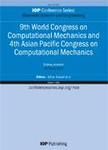版权所有:内蒙古大学图书馆 技术提供:维普资讯• 智图
内蒙古自治区呼和浩特市赛罕区大学西街235号 邮编: 010021

作者机构:Center of Excellence for Biochemistry and Natural Products Nguyen Tat Thanh University Ho Chi Minh City Vietnam. NTT Hi-Tech Institute Nguyen Tat Thanh University Ho Chi Minh City Vietnam. Graduate University of Science and Technology Vietnam Academy of Science and Technology Ha Noi Vietnam TRAVIPHA Co. Ltd. Tien Giang Province Vietnam Faculty of Environmental and Food Engineering Nguyen Tat Thanh University Ho Chi Minh City Vietnam College of Agriculture Can Tho University Can Tho City Vietnam
出 版 物:《IOP Conference Series: Materials Science and Engineering》
年 卷 期:2020年第991卷第1期
摘 要:Tea is considered to be a product that brings health benefits. The drying process showed high efficiency in processing this product. However, the process of moisture is not qdequately controlled, resulting in wasted energy in the drying process. The dynamics of the drying process of soursop leaves and the effect of temperature on the process speed were assessed in the present study. Five models (Newton, Henderson and Pabis, Page, Logarithmic, and Weibull) were used to determine the suitable drying dynamic at temperatures of 50°C, 55°C, 60°C and 65°C. The mechanism of the processing is based on the principle of dehumidification of the convection drying system with hot air, which caused the moisture inside the material to move outwards. The results showed that the drying temperature is directly proportional to the drying rate of the process, as the increase in drying temperaturefrom 50°C to 65°C produced the link breaking energy and heating thatleads to evaporation. Dehumidification rate depends on the temperature, change in Deff value as 1 x (RTa) -1 from from 9,264 95 × 10−9 m/s2 to 9.76485 × 10−9 m/s2. Page model with determination coefficient R2 0.99 was found to be the most suitable model for experimental data.